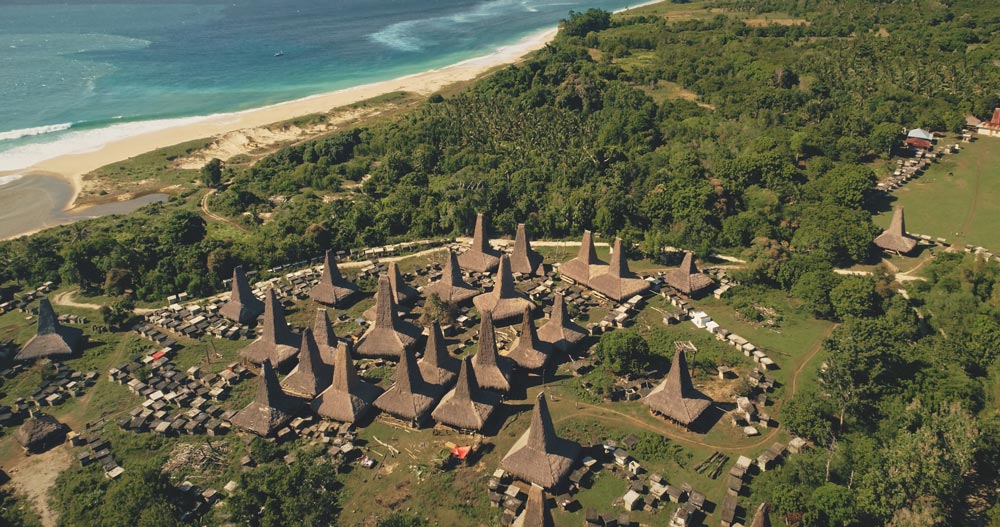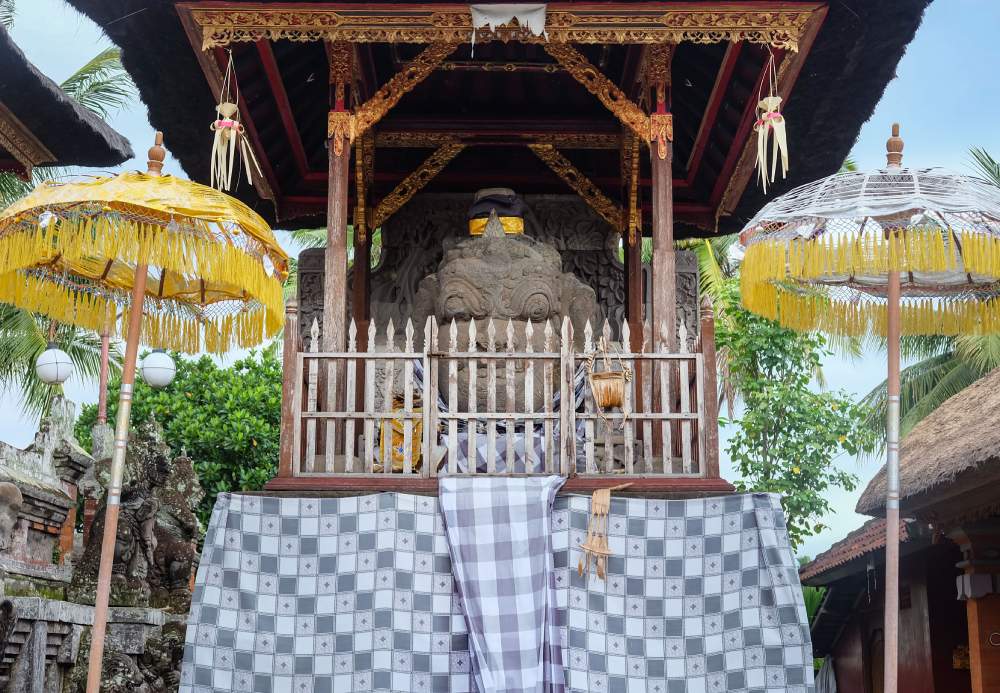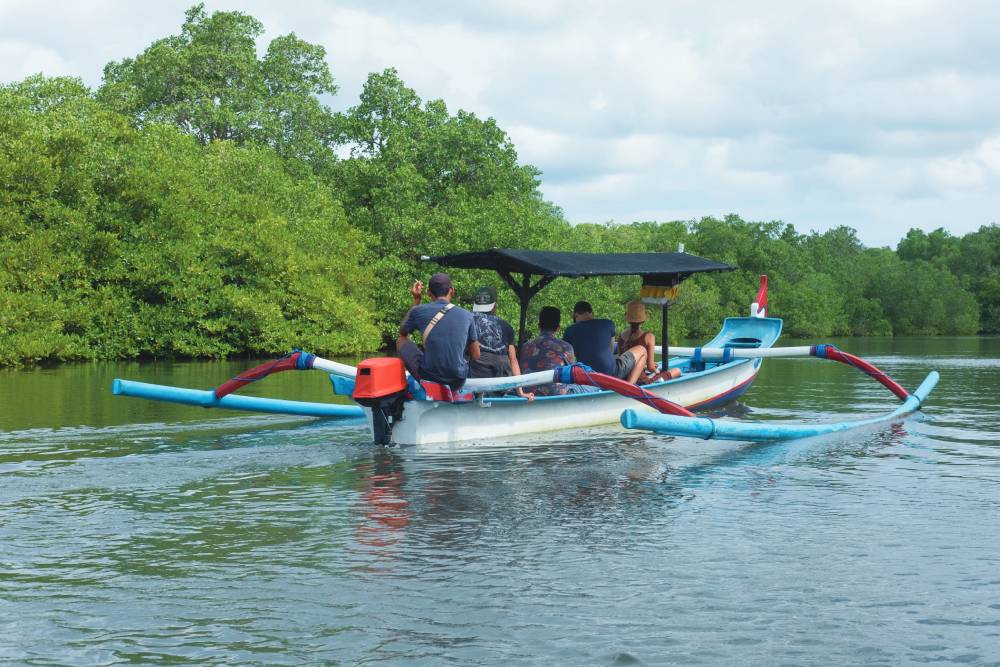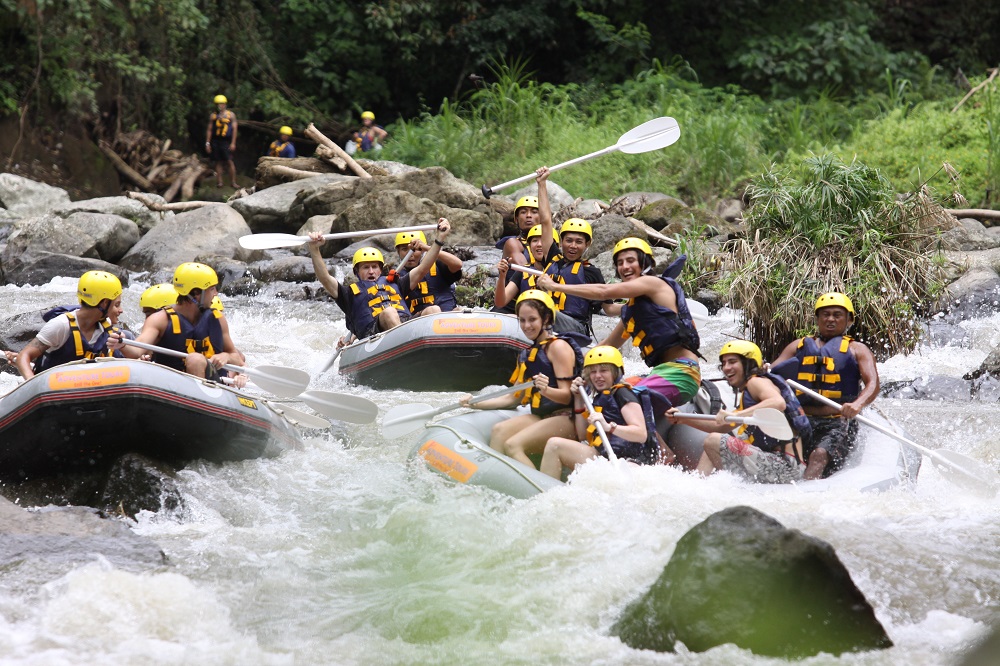
One of the must-do activities enjoyed by tourists coming to Bali is rafting in the rivers that run past Ubud, but it wasn’t always this way. In the ’70s & ’80s, Ubud was only known as an arts and crafts village, where tourists went to buy art or study painting or to learn or watch Balinese dance. It was a quiet and peaceful getaway from the hustle and bustle of Kuta in the South. That all changed in the early 90s when the first rafting company opened and other adventure activities, such as mountain biking, trekking and later ATV tours started to appear, bringing the active younger set and lots of families. Then after 2000, Ubud saw the beginning of a new trend: yoga and wellness, which brought yet another sort of tourist. But perhaps it was rafting that made the biggest change, so here we bring you the story of how it all began.
In 1980, Australian Nigel Mason arrived in Bali and fell in love with the island and a beautiful Balinese girl named Yanie. Together they opened ‘Yanie’s Restaurant’ that became famous for its Australian-style cuisine, selling steaks and hamburgers long before McDonalds appeared on the island. It was a huge success and became the place to go for visiting Australians. Some years later in 1989, Nigel, being an entrepreneur, decided to open a white-water rafting operation on Ubud’s Ayung River, inspired by watching expats on the river floating by on huge truck inner-tubes, from the banks of his land that he had purchased in Sayan, one of Ubud’s neighbouring villages. However, Nigel’s idea of rafting wasn’t the same as the usual rafting scenario found in places like the USA and New Zealand, where only ‘gung ho’ young people brave enough to face dangerous rapids went rafting, rightly aware that it was a potentially dangerous and even life-threatening sport.
Nigel saw that the Ayung River was a different type of river with tamer water and a special scenic beauty, so he came up with a totally different concept where he decided to build a unique and complicated infrastructure that made it possible for whole families, including children, to access and raft the beautiful Ayung River in previously unattained levels of safety. That included a walkway and stairs built down a cliff for ease of access, and both on and off river facilities. He also developed equipment that correctly fitted all sizes of people, from small 5-year-old children up to 50-plus adults, who previously would have never considered rafting as a holiday activity.
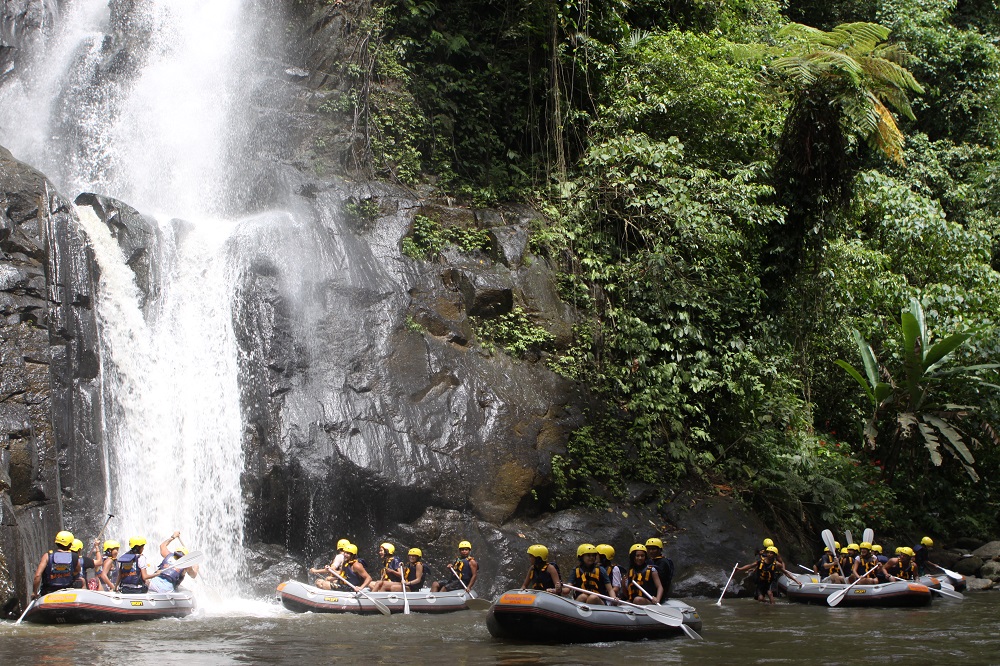
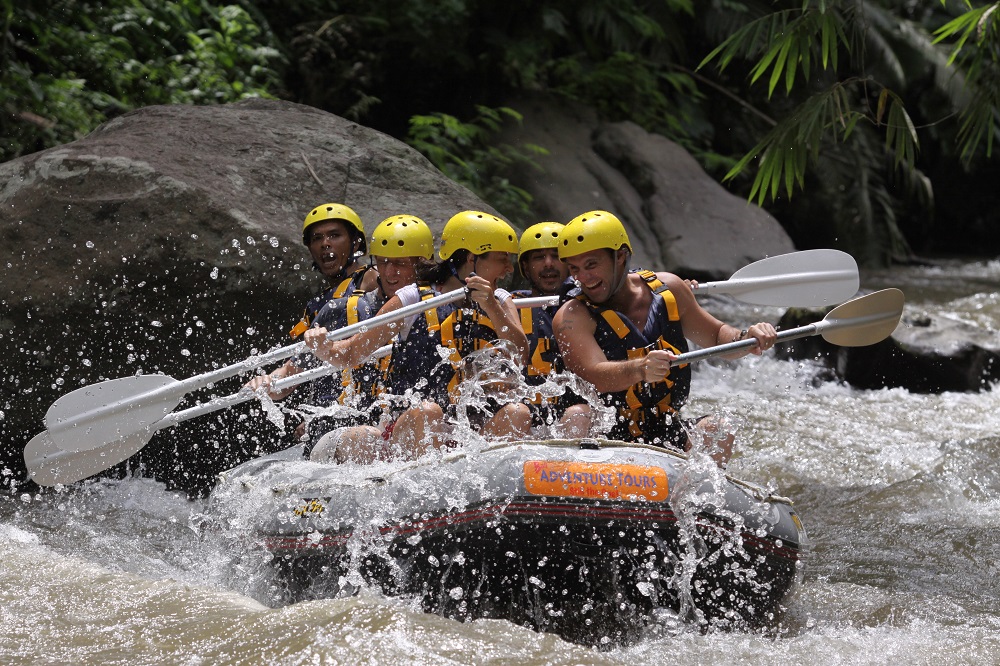
The late author Richard Mann, who wrote numerous books on Bali and Indonesia, credited Nigel with kick-starting the whole adventure industry in central Bali, which has now turned into a multi-million-dollar industry. He said that without Nigel’s pioneering input, the area around Ubud may have never developed from the 1990s through to today with its massive adventure industry. In fact, he added, “Nigel put the word Adventure into Bali”.
Nigel’s business formula of ‘Rafting for the Whole Family’, instantly created an extremely popular activity that was a huge success. This was helped by Nigel and Yanie doing extensive personal promotional tours throughout Australia, which at that time was Bali’s largest source of tourists. Today thousands of people raft the Ayung River each week, with numerous copycat companies following Nigel’s lead way back in 1989. His company, formerly known as Bali Adventure Rafting, and now known as Mason Adventures, is still in operation, with greatly improved facilities, making it the island’s truly ‘5 star’ rafting operation. Nigel explains why.
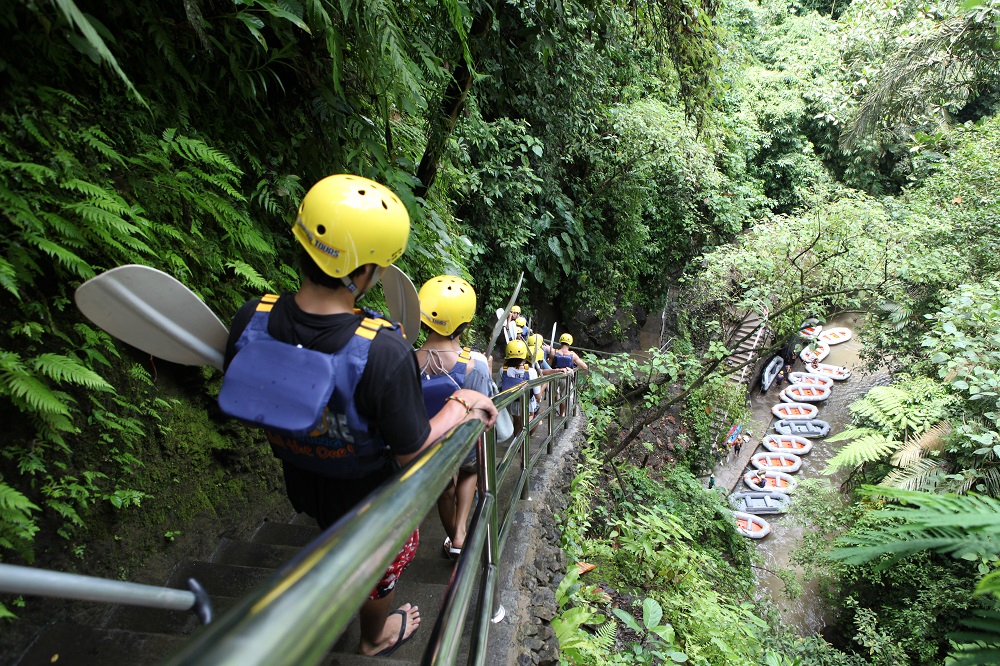
“Since I opened my rafting operation, there have obviously been numerous companies copying us, trying to follow our initial formula, however, most of them have taken shortcuts along the way, usually to save money by not investing in what is necessarily expensive infrastructure. That has now not only caused confusion in the marketplace but also negatively impacted my original idea, as each company looks to spend as little as possible to make maximum profit. Now we see very inadequate facilities and a deterioration in quality but most of all, in safety”, shares the founder.
“Rafting on the Ayung River is not classed as dangerous in normal circumstances, but on some days of the year the water can rise quickly due to rain in the mountains; that makes it extremely important to have strict rules and practices, especially regarding safety. But heavy discounting of prices has a negative effect on professional standards, and on the purchase and upkeep of top-class equipment. Unfortunately, the government has never set out safety standards for the industry nor have they insisted that companies adhere to what is already established world standards, with the consequence that each company just sets its own standards.”
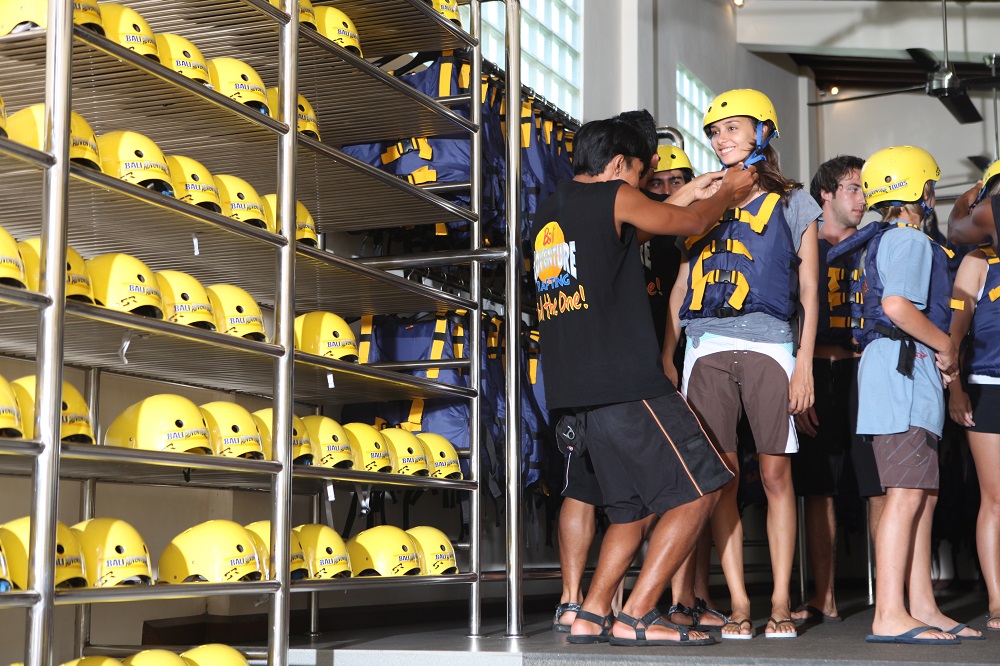
“Here are some of the things that greatly concern me:-
- Many of the new companies have spent very little on their infrastructure, such as the stairs down to the river, in fact, one company’s steps collapsed killing four tourists instantly before they even got to the river, a couple of years ago.
- It is only common sense that all rafts should carry First Aid and Rescue Equipment, but most companies don’t comply with these basic rules.
- Well-maintained rafts are a must, as a deflated raft can spoil your day of fun, as it either needs replacing or has to be continually blown up as it progresses down the river.
- It is important also that river guides are well trained and disciplined to stop stupid or bad behaviour that can scare away the beautiful natural wildlife or pollute the river.
- Guides stopping at drink sellers on the river are frowned upon by good operators, as it contributes to polluting this pristine river and it sometimes allows people to get drunk and behave badly while rafting. Guides earn commissions from these high-priced drink sellers, so they see this as part of their income and are tempted to stop. I ban my guides from supporting this.”
“Another thing that happens is that the “discount” companies transport their guests in small open trucks to the river starting point, rather than in air-conditioned buses. These trucks are normally used for transporting cows or pigs and are totally illegal under Indonesian laws, however, local authorities ignore this, which allows safety to again be compromised and insurance to be null and void. Companies also often either don’t have any insurance or fall short of full coverage. So, it’s important when making a booking to ask some important questions to make sure that you get value and safety included in your ticket.
Some of the questions that you need to ask are:
- How long is the rafting trip in both kilometres and time, as many companies have very short trips that they don’t advertise giving you less value.
- Do they take you to the river in open trucks?
- Do they rent all their equipment daily, as this means that no proper maintenance is taking place, and jackets are often wet and smelly?
- Do they carry rescue and first aid equipment in each raft?
- How much is their insurance cover — not do they simply ‘have insurance’?
- Do they have clean toilets and changing rooms and a hygienic restaurant at their finish point?

Remember in Bali, paying commission is a widespread practice for everything, so a freelance agent or driver is motivated by this, rather than your safety or your enjoyment. Once you’ve paid your money there are no refunds, so choose wisely. Cheap is rarely a sign of quality, safety or enjoyment.”
Nigel puts it in a nutshell. “We want all our guests to feel safe, enjoy their special day and have the best that Bali has to offer. I pioneered the rafting industry, and it breaks my heart to see so many new rafting companies offer discounts to such a degree that their operations are compromised, bringing down the quality and safety of the industry that I pioneered more than 30 years ago. As I always say to my guests, “You pay for what you get in any product, and rafting is no different, so go cheap at your peril’ ”.
To find out more about the history of rafting, Nigel and Yanie Mason or Mason Adventures Bali, please visit masonadventures.com or follow @masonadventuresbali.
